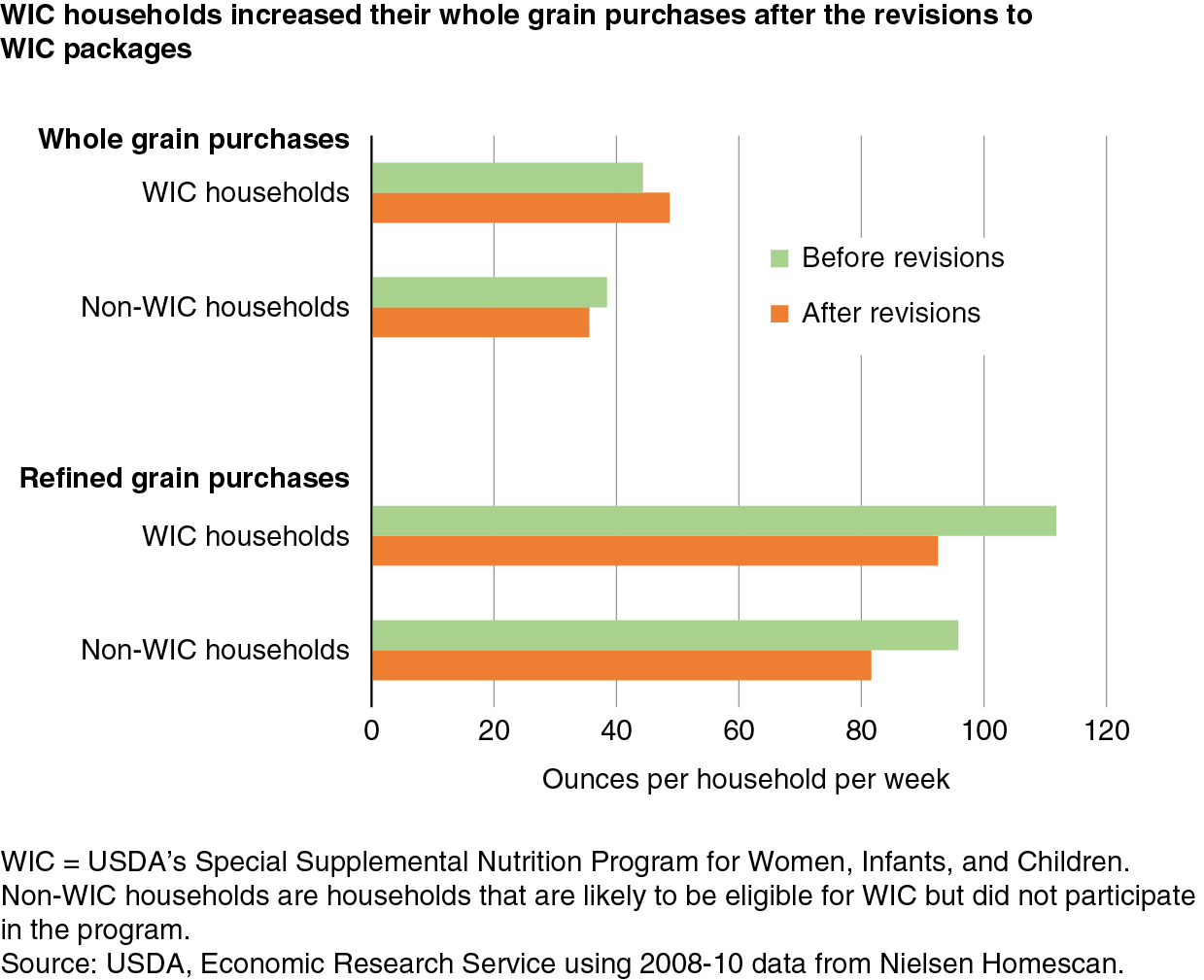Revised WIC Food Packages Increase Purchases of Whole Grains
- by Ilya Rahkovsky
- 4/3/2017
USDA’s Special Supplemental Nutrition Program for Women, Infants, and Children (WIC) provides nutritionally at-risk, low-income, pregnant, postpartum, and breastfeeding women, as well as infants and children up to age 5, with supplemental foods, nutrition counseling, and access to health services. These WIC benefits are provided at no cost to the participant. In fiscal 2016, an average of 7.7 million people per month participated in WIC, about half of whom were children.
Most participants acquire their WIC foods by redeeming a voucher, check, or electronic benefits transfer card for the foods specified in their WIC package at a store authorized to accept WIC benefits. The types and quantities of foods vary with the participant category, breastfeeding status, and age of the infant.
To encourage whole grain consumption among WIC participants, USDA revised the WIC food packages in October 2009 to include whole wheat or whole grain bread, whole grain breakfast cereals, soft corn or whole wheat tortillas, brown rice, and other whole grain foods. The Dietary Guidelines for Americans recommend consuming at least 3 ounces of whole grain food products per day (based on a daily 2,000-calorie diet) and that whole grains constitute at least half of all grain products consumed. The 2009 revisions to the WIC packages also added fruits and vegetables and lower fat dairy products, and allowed for more opportunities for product substitution.
Researchers used national Nielsen Homescan household panel data from 2008 to 2010 to assess the impact of the changes in the WIC food packages on purchases of whole grain foods. The researchers found that after the revision, WIC-participating households (WIC households) increased their average purchases of whole grains from 44.3 to 48.7 ounces per household per week from 2008 to 2010, respectively, while likely WIC-eligible households that did not participate in the program (non-WIC households) actually reduced their average whole grain purchases from 38.5 to 35.5 ounces per household per week during the same period. Both WIC and non-WIC households reduced their purchases of refined grain products, which are recommended to be consumed in moderation and are substitutes for whole grain products. WIC households reduced their refined grains purchases by 17 percent (from 111.8 to 92.5 ounces per week), while non-WIC households reduced their refined grains purchases by 15 percent (from 95.8 to 81.6 ounces per week).
WIC households spent an average of $6.35 per week on whole grain products in 2008-10. Researchers estimated that the revised WIC packages increased total spending on whole grain products by $1.14 per household per week among WIC households relative to similar non-WIC households. Before the changes, WIC participants spent $0.69 per household per week more on whole grain foods than similar non-WIC households.
This article is drawn from:
- “Did Revisions to the WIC Program Affect Household Expenditures on Whole Grains?” by Miyoung Oh, Helen H. Jensen, and Ilya Rahkovsky. (2016). Applied Economic Perspectives and Policy.


